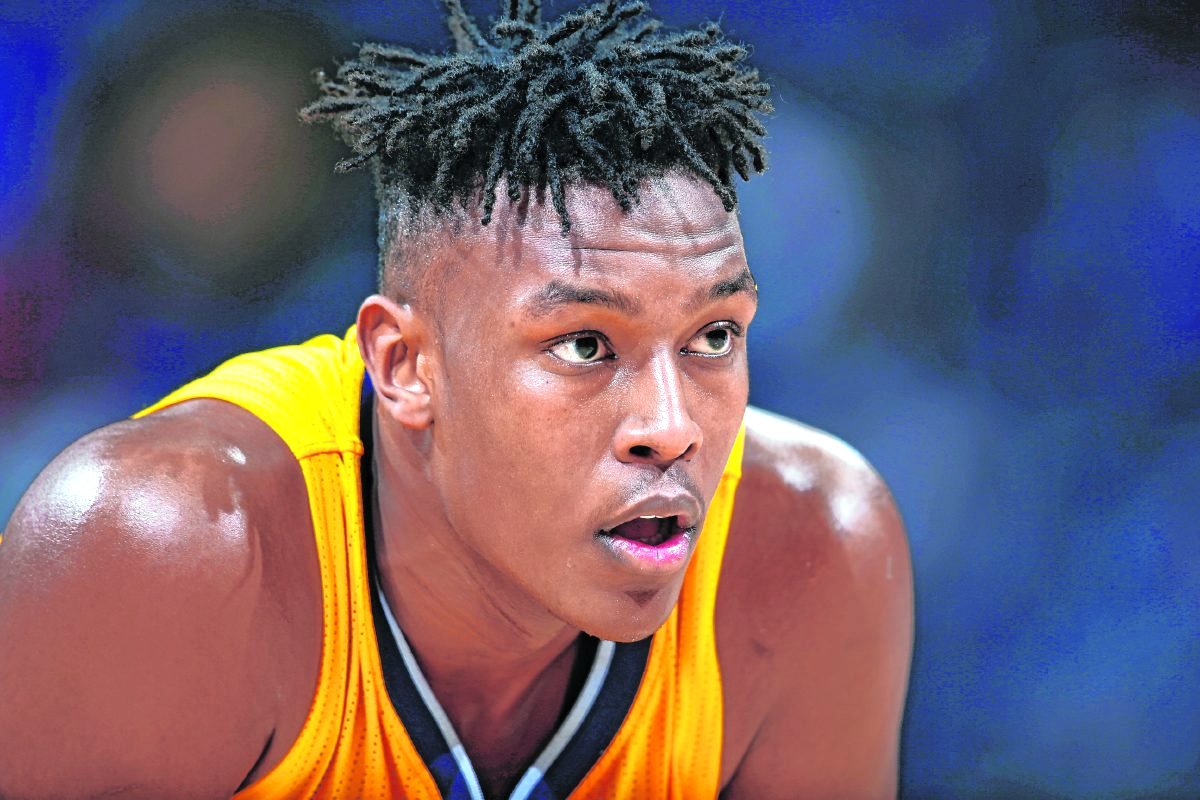
The coronavirus is about more than statistics when it invades your home.
Those 3.5 million cases cases and nearly 250,000 deaths are anonymous numbers for most people but very personal when your father nearly dies from COVID-19.
Myles Turner is as eager to play basketball again as his Indiana Pacers teammates, but he is not one of those people shouting to reopen the economy and the NBA at supersonic speed.
He is fine sheltering in place in Texas with loved ones without complaint as long as logic and medical advice dictate.
[sc:text-divider text-divider-title=”Story continues below gallery” ]
Turner recently spoke about the possibility of returning to basketball but also recounted the ordeal his father, David, and his family endured as the disease rendered his dad critically ill.
"It was definitely scary at times," Turner said of watching the man who has been his lifelong basketball mentor lying helpless.
The NBA ceased playing games March 11 as part of the nationwide shutdown of activities that brought crowds together. Turner said his father probably contracted the coronavirus in Indiana before returning to Texas.
When David Turner first became ill with fever and chills, he worried he had been infected and visited a hospital. Initially, Myles said, the older Turner was misdiagnosed as having the flu.
When his condition deteriorated, David was taken to a different hospital and received the coronavirus diagnosis.
"It was a rough patch for a couple of weeks," Myles said.
Before recovering, Myles’ father endured pneumonia and at times was on oxygen. The family was shaken by his close call.
Myles, who turned 24 on March 24 after the games stopped, has become a cornerstone of the Pacers’ success. He stands 6-foot-11 and weighs 250 pounds and is the kind of contributor who makes a bigger splash in the box score and on the court in secondary areas more so than putting points on the board.
When the Pacers took their timeout, they were sitting on a 39-26 record. Turner was averaging 11.8 points and 6.5 rebounds a game.
Players have been isolated from each other and the rest of the world through social distancing, though Turner said he corresponds with teammates through social media.
Basketball players have been shut out of basketball courts (unless they have their own) but are trying to stay in shape any which way they can if and when the league resumes play to complete the regular season and conduct playoff rounds.
Running, weightlifting and stretching are all common exercises being practiced by many Americans who are not professional athletes but seek to stay fit and avoid going stir-crazy. Turner’s thing is yoga.
He has experimented with yoga and become an increasingly committed practitioner over the last few years, but he has been stepping up his game during this hiatus.
"I’m still trying to do a handstand," Turner said.
Turner also has been exercising his mind during the break, studying the stock market so he can perhaps better manage the type of financial investments that might lure in a guy who has a four-year $80 million contract as a base.
Right now, the world is itching for normalcy, and that includes the resumption of the games people play. There is hunger for the entertainment distractions sports supply, but a pervasive fear coronavirus will spread like wildfire in an arena with fans sitting too close together.
What everyone wants to hear is that everything will be all right again, that it will be safe to play ball and hang out with friends watching the athletes play ball.
And that’s what the athletes want.
"I definitely to play," Turner said. "Just the competitor in me."
Yet there is cautiousness in that resolve because athletes are also people with the same physical vulnerabilities as other Americans. Basketball players do not want to compete in an arena where every cough is amplified and fraught with meaning.
"I know this virus isn’t going anywhere soon until we get a vaccine," Myles said. "I can see why we couldn’t play."
Myles is in his 20s, but on this issue, he sounds as if he is in his 50s, dispensing a level-headed observation that was hard-earned because he witnessed up close the type of threat COVID-19 presents.
